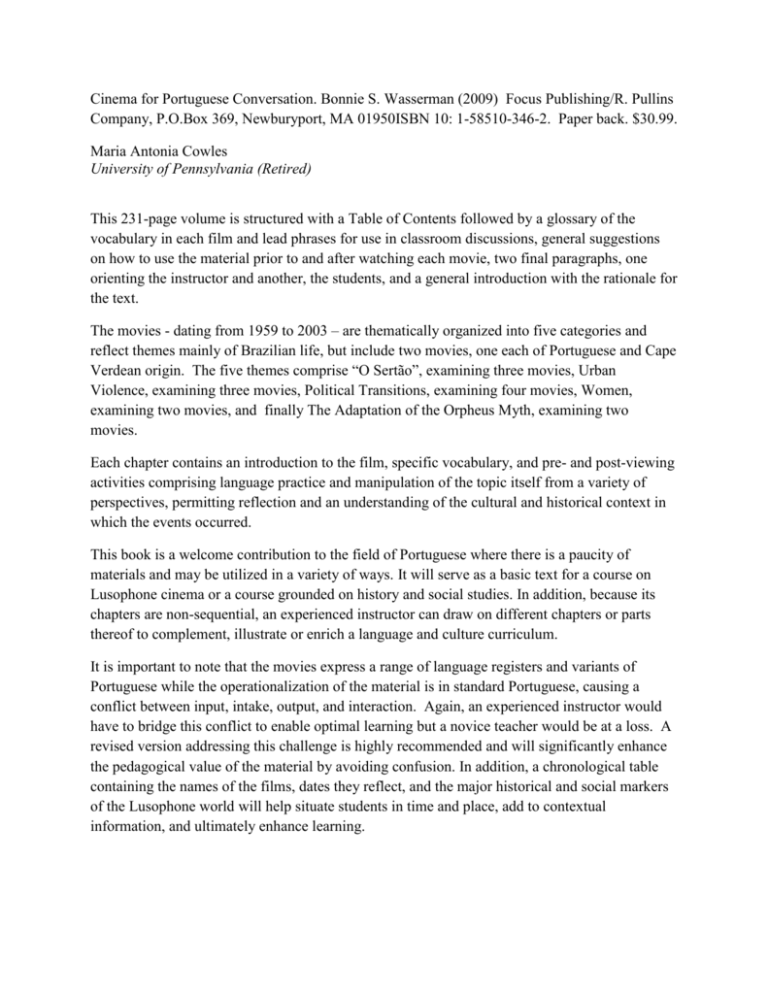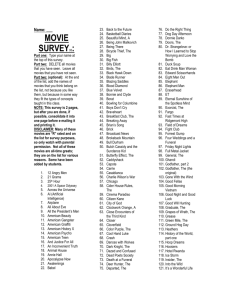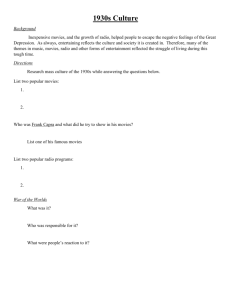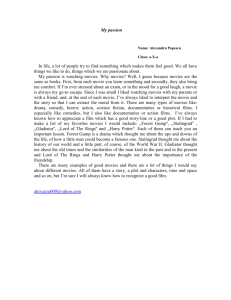Cinema for Portuguese Conversation.
advertisement

Cinema for Portuguese Conversation. Bonnie S. Wasserman (2009) Focus Publishing/R. Pullins Company, P.O.Box 369, Newburyport, MA 01950ISBN 10: 1-58510-346-2. Paper back. $30.99. Maria Antonia Cowles University of Pennsylvania (Retired) This 231-page volume is structured with a Table of Contents followed by a glossary of the vocabulary in each film and lead phrases for use in classroom discussions, general suggestions on how to use the material prior to and after watching each movie, two final paragraphs, one orienting the instructor and another, the students, and a general introduction with the rationale for the text. The movies - dating from 1959 to 2003 – are thematically organized into five categories and reflect themes mainly of Brazilian life, but include two movies, one each of Portuguese and Cape Verdean origin. The five themes comprise “O Sertão”, examining three movies, Urban Violence, examining three movies, Political Transitions, examining four movies, Women, examining two movies, and finally The Adaptation of the Orpheus Myth, examining two movies. Each chapter contains an introduction to the film, specific vocabulary, and pre- and post-viewing activities comprising language practice and manipulation of the topic itself from a variety of perspectives, permitting reflection and an understanding of the cultural and historical context in which the events occurred. This book is a welcome contribution to the field of Portuguese where there is a paucity of materials and may be utilized in a variety of ways. It will serve as a basic text for a course on Lusophone cinema or a course grounded on history and social studies. In addition, because its chapters are non-sequential, an experienced instructor can draw on different chapters or parts thereof to complement, illustrate or enrich a language and culture curriculum. It is important to note that the movies express a range of language registers and variants of Portuguese while the operationalization of the material is in standard Portuguese, causing a conflict between input, intake, output, and interaction. Again, an experienced instructor would have to bridge this conflict to enable optimal learning but a novice teacher would be at a loss. A revised version addressing this challenge is highly recommended and will significantly enhance the pedagogical value of the material by avoiding confusion. In addition, a chronological table containing the names of the films, dates they reflect, and the major historical and social markers of the Lusophone world will help situate students in time and place, add to contextual information, and ultimately enhance learning.







